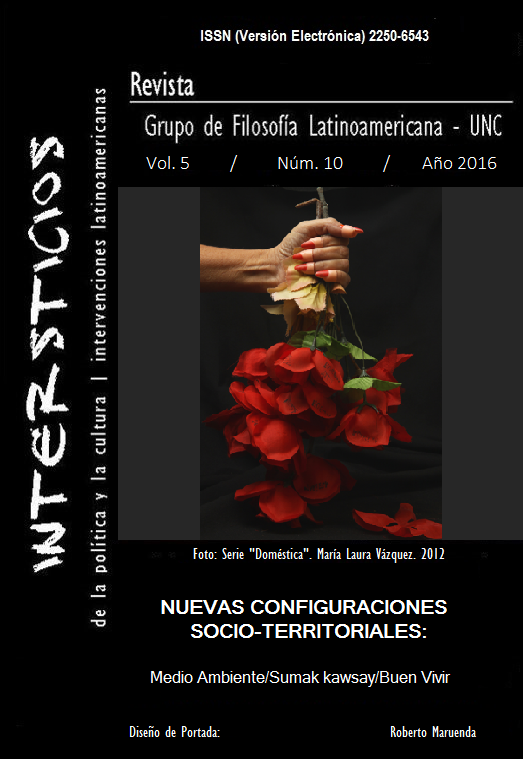Kawsak Sacha: production of the common, social counter-production of nature and capitalist condensation
Keywords:
Buen vivir (good living), Sumak Kawsay, extractivism, natural space and territory, indigenous resistances, social production of nature, colonial capitalism, ecuadorian amazonAbstract
How does the production of nature take place under communitarian forms or the ones found at the frontiers or peripheries of capitalist colonial expansion? How is the social-natural space being produced (or counter-produced) from the commons and communality? How is nature being thought or expressed in the representation and imagination of the natural world from these frontier spaces? The following essay proposes that the social production of the commons is closely related to a social counter-production of the natural space, which constitutes a form of deacumulation of the capitalist logic, thus resisting different forms of dispossession. A possible example of this counterproduction lies in the experience of resistance against oil extractivism of the Kichwa community of Sarayaku in the Ecuadorian Amazon. The life project of the community departs from the principles of Sumak Kawsay or Buen Vivir (good living), thus establishing a central concept: Kawsak Sacha, the jungle of beings. These new concept entails a “trascendental” conception of territorial space, where the emotional, psychological, physical and spiritual dimensions of the community are being projected.Downloads
Downloads
Published
Issue
Section
License
Authors who have publications with this journal agree to the following terms:
a. Authors will retain their copyright and grant the journal the right of first publication of their work, which will simultaneously be subject to the Creative Commons Attribution License that allows third parties to share the work as long as its author and first publication in this journal are indicated.
b. Authors may adopt other non-exclusive license agreements for distribution of the published version of the work (e.g., deposit it in an institutional telematic archive or publish it in a monographic volume) as long as the initial publication in this journal is indicated.
c. Authors are allowed and encouraged to disseminate their work through the Internet (e.g., in institutional telematic archives or on their web page) after the publication process, which may produce interesting exchanges and increase citations of the published work (see The effect of open access).











